Eared Grebe
Pied-billed Grebe
American Coot
Gray-headed Swamphen
American White Pelican
American White Pelicans (Pelecanus erythrorhynchos), arrive in flocks soaring through the Florida sky in a V formation. With their snowy white bodies, yellowish-orange bills, orange legs, and black-tipped wings that span up to nine and a half feet, they are truly a sight to behold.
White Pelicans breed in the northwestern United States and in western Canada. Many choose to spend their winters near Florida’s coastlines and in its wetlands.
American White Pelicans (Pelecanus erythrorhynchos) spend the summer months in colonies In Canada and Northwestern United States, where they breed and raise their young on lakes.
Before winter, flocks of white pelicans soar into Florida by flying high in a V formation. One of North America’s largest birds, a white pelican, is hard to miss with its wingspan of up to 9 1/2 feet. Black wingtips and pink or reddish-orange legs, feet, and bills make this bird a must-see.
Look for white pelicans on coastal waters, bays, estuaries, and inland waterways. Their nests, consisting of sticks and dirt, can be found on the ground. Watch as these graceful birds float on the surface of the water and dip their heads to scoop up a fish dinner. You will often find several of them together as they participate in a group effort to herd fish into a buffet for all.
White Pelicans are often spotted fishing with Double-Crested Cormorants. You may see a hungry White pelican steal a fish from another pelican or a cormorant.
Plan a trip to one of Florida’s coasts. Explore the shoreline and the wetlands. Take some time to sit back and discover the group’s camaraderie as well as the stealthy antics of a few individuals.
We can all work together to ensure these vulnerable beauties are here for our next generations to enjoy by eliminating pesticides and cleaning up litter, including monofilament lines.
Sora
Soras, Porzana Carolina, are chubby little birds who spend most of their time hidden in marshes. Their distinctive whistles can be heard often near ponds, rivers, and other marshy areas. When they finally appear, Soras move their heads forward with each step and flick their tails to expose the white undersides. They are striking birds with a black mask and a bright yellow bill.
After the male and female complete their courting ritual, the couple builds a nest of grasses and dead cattails before adding a soft lining. The nest is well hidden in the dense marsh, often among cattails, and is placed a few inches above the water. Incubation begins as soon as the first of 10-12 eggs are laid. As the eggs hatch, one parent will incubate the remaining eggs while the other will care for the hatchlings who leave the nest. Both parents will feed the hatchlings for 3 weeks before the young ones learn to fly.
Soros dine on a variety of foods. Seeds, insects, snails, and aquatic invertebrates are some of their favorite foods. They forage on the ground, in the water, on plants, and in the mud.
Have you heard a Sora? Listen Here:
http://www.azfo.org/…/…/AZFO_SORA_CALLS_2_deviche_092405.mp3
Photo Credit: Andy Waldo
Double-crested Cormorant
The Double-crested Cormorant is also known as The Sea Raven. Cormorant is derived from the Latin word Corvus, which means raven, and Marinus, which means sea.
Cormorants (Phalacrocorax auritu) are brownish-black with black webbed feet and legs and a reddish-orange face and beak. You will often find them floating low in the water or with their wings outstretched along the shores of coastal areas, rivers, swamps, and lakes. Because their oil glands do not waterproof their rings, cormorants will find a sunny spot to dry their wings.
Cormorants may feed alone or in flocks. Finding their favorite foods, fish, and invertebrates, like shrimp and crabs, may require them to dive up to 60 feet and remain submerged for more than a minute. Cormorants are not picky eaters, and their diets vary by season. They enjoy treats such as eels, plants, frogs, and an occasional snake.
Courtship is a big deal for Sea Ravens. A Male will use his wings to splash, swim in zig-zag patterns, and dive for vegetation to present to a female. He will crouch at his chosen nest site and call out to his desired female while vibrating his wings. Nesting usually takes place in a large colony, which is sometimes shared with other wading birds. Using twigs, sticks, seaweed, and grass collected mostly by the male, the female constructs most of the nest in a tree or on the ground near the water. Cormorants incubate their 3-4 eggs with their webbed feet. Both the male and female will feed the chicks until they are about 10 weeks old and ready to leave the nest.
Before 1966 populations significantly decreased from hunting and pesticides such as DDT. Today, cormorants are once again widespread and abundant. This heartwarming story of the Sea Ravens, who not only survived persecution from humans but who are now thriving, can be repeated with today’s endangered and threatened animals. It’s up to us to teach folks of all ages to connect, respect, and coexist with our wildlife and within our shared ecosystems.
Purple Gallinule
Plumage in shades of purple, teal, indigo, and olive, along with a yellow-tipped red bill and bright yellow legs, make this bird hard to miss. Purple gallinules (Porphyrio martinicus) are noisy rails that are most often found near freshwater marshes, ponds, and swamps. You may find them swimming, walking on lily pads, or in the branch of a tree.
In the spring and summer, a pair of Purple Gallinules will build one or more nests at or above the water level. The nests are supported by strong vegetation at the water’s edge and are made of grasses, cattails, and other vegetation found nearby. Raising babies is a family affair. Both the male and female incubate 5-10 eggs for 22-25 days. Once hatched, the mother, father, and older siblings help feed the babies until they are 9 weeks old and able to fly.
Purple Gallinules are omnivorous. You may find them pecking the ground like a chicken as they forage along the shore for fruit, seeds, insects, worms, or snails. They will nod their head in the water while looking for tasty aquatic greens or a fish dinner.
When you see a Purple Gallinule, spend some time watching this gorgeous bird with quirky movements. Note how their feathers appear to change color when they move from sunshine to shade. You will be amazed at how the Purple Gallinule’s brilliant colors perfectly blend into Florida’s wetlands.
Photo Credit: Andy Waldo
Limpkin
The Limpkin (Aramus guaraunas) is a unique-looking bird. It is brown with white spots and streaks, densest on the head and neck, with a long yellow bill. The Limpkin is 25 to 29 inches long, with a wingspan of 40 to 42 inches. Because of their long toes, they can stand on floating objects as well as swim. Limpkins get their name from the seeming limp when they walk. They are also known as the wailing bird or crying bird due to their loud, mournful call at night.
Limpkins’ diet consists of apple snails and freshwater mussels. Adapted for foraging on apple snails, the bill is slightly curved to the right so it can slip into the snail. When closed, the bill has a gap right before the tip. The bill then acts like tweezers when it needs to feed. They will also eat worms, insects, frogs, and lizards.
The Limpkin’s habitat includes the shores of ponds, lakes, rivers, swamps, and open freshwater marshes. Their nests are made up of twigs and any kind of vegetation. They are built on anything from floating vegetation to tree limbs. Both parents incubate the eggs during the day, but only the females incubate at night. The clutch size is between 3 to 8 eggs, ranging in color from grayish-white to deep olive with brownish or purplish gray streaks. When they are born, they can run, walk, and swim. This bird was once very common in Florida, but because of the decline of its primary food, the Florida Apple Snail, and habitat loss, it is listed as a species of special concern.
Did you know: A group of limpkins is known as a “hobbling.”
Moorhen (Common)
The Common Moorhen (Gallinula chloropus), also known as Marsh Hen, is a medium-sized bird. It is migratory in some parts of the U.S., Canada, South America, Europe, Asia, and Africa, but they love Florida and Mexico and stay year-round. The Moorhen, a part of the rail family, spends its life on the water and is usually 12 to 15 inches in size when fully grown. Despite having no webbing on their feet, they are good swimmers. Of course, you can not miss them with their gray-black feathers, a line of white feathers, and a red bill with a yellow tip.
Moorhens are omnivores and love to eat seeds and other plant material floating on the water. They also eat algae, small fish, tadpoles, insects, aquatic roots, berries, grass, snails, insects, rodents, lizards, and worms. On land, you will see them ‘peck’ like a chicken for their food.
Moorhen pairs are monogamous. Females will lay 4 to 12 eggs, laying only one egg a day. The chicks will fledge within 5 to 7 weeks, and Momma Moorhen might have another brood later in the season.
Predators such as foxes, dogs, coyotes, and raccoons are the main predators of the moorhen. Large reptiles and Wildcats may also prey on them.
Here you see a moorhen family on the water’s edge.
Anhinga
Anhingas (Anhinga anhinga) are known as snakebirds because they swim with their bodies submerged while stretching their head and neck above the surface of the water, giving them the appearance of a snake about to strike. They are large, dark waterbirds with long, thin necks, bills, tails, and silver patches on the wings. Males have greenish-black plumage, accentuated by silver-gray feathers on their upper back. Their wings are edged with long white feathers. Females are brown with a light brown head and neck.
Anhingas hunt by spearing fish and amphibians with their sharp, slender beaks. They are so powerful that sometimes they have to leave the water with the speared fish and use a rock on the shore to remove the prey. Because of the unusual shape of their wings and the lack of a gland that secrets oil like other birds, Anhingas becomes waterlogged. This makes it possible for them to dive easily and stay underwater for long periods of time.
After hunting, Anhingas sit in shrubs and trees with their back to the sun and stretch out their wings. This posture helps to dry their water-logged wings and warm their body after exposure to cold water. They prefer shallow, slow-moving, sheltered waters for hunting with access to nearby perches and banks for drying and sunning themselves.
Anhingas are monogamous. The male gathers the nesting materials, and the female weaves together the nest. They are known to reuse the same nest year after year. The female will typically lay from two to six pale bluish-green eggs. The parents share incubation of the eggs for 25 to 30 days. Chicks will stay in the nest for 3 weeks. At 6 weeks, they will climb onto the branch and fledge. They stay with their parents several more weeks before becoming independent.
Their scientific name is one that everyone can remember, Anhinga anhinga.
A common sight all across Florida, these birds occupy a variety of mostly freshwater habitats. They prefer slow-moving lakes, ponds, and backwater areas but can be found in saltwater areas as well. Excellent fishers, they dive to spear small fish and other small aquatic life. After fishing, they perch and dry their wings, as seen in this photo, so that they can fly again.
Protected by the Migratory Bird Treaty Act of 1918, the species is considered of least concern due to their stable population across their massive range. Apart from natural predators such as alligators, bobcats, and panthers, they are susceptible to being entangled in discarded fishing lines. Their aquatic lifestyle also means that is pollutants are present in the water. Anhingas are susceptible to accumulating these contaminants

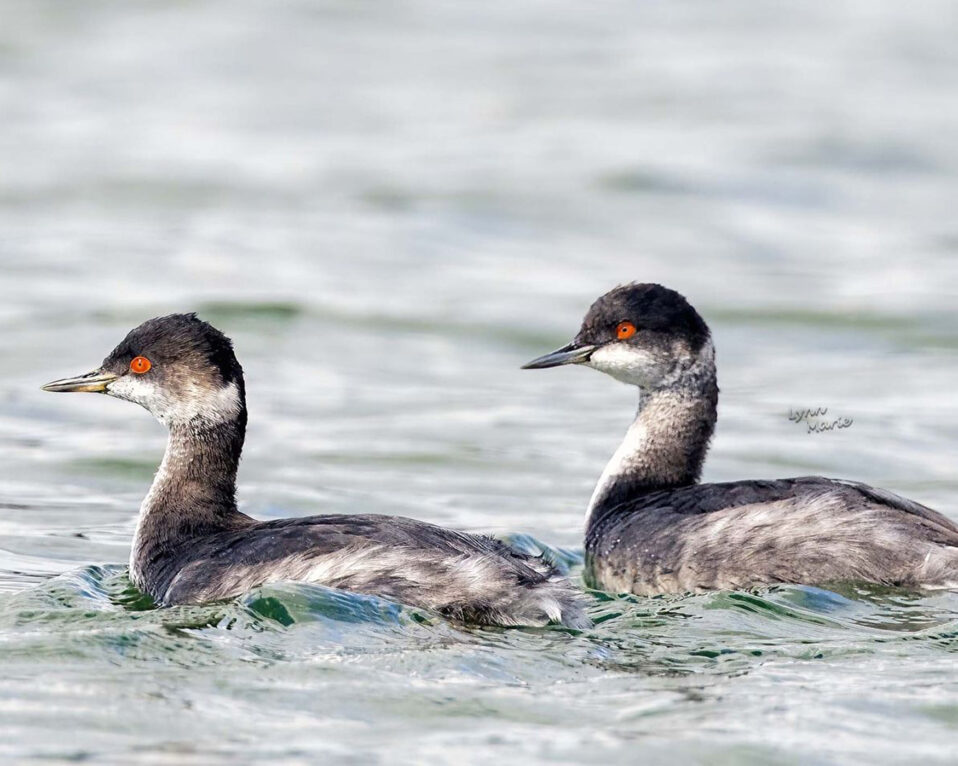
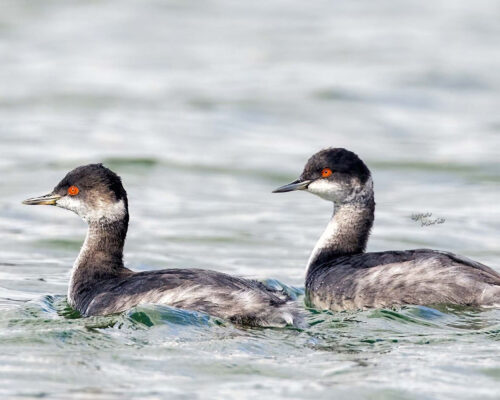
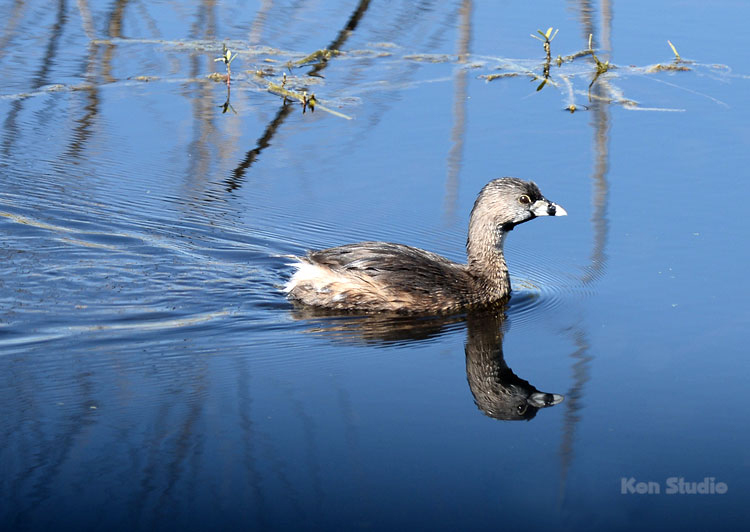
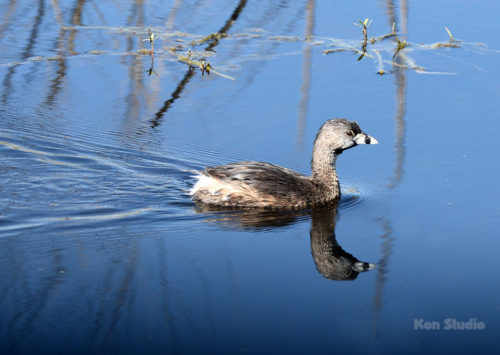
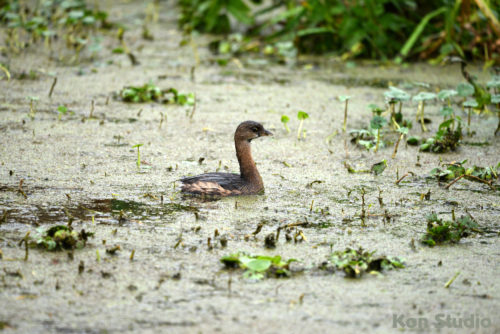
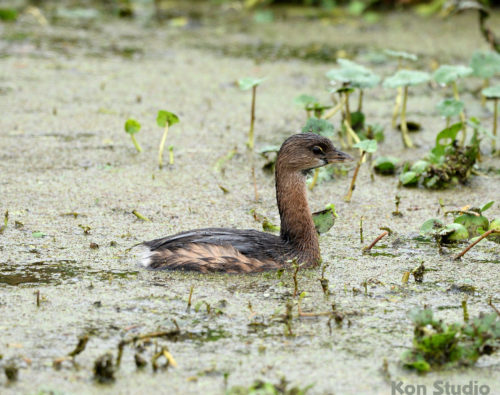
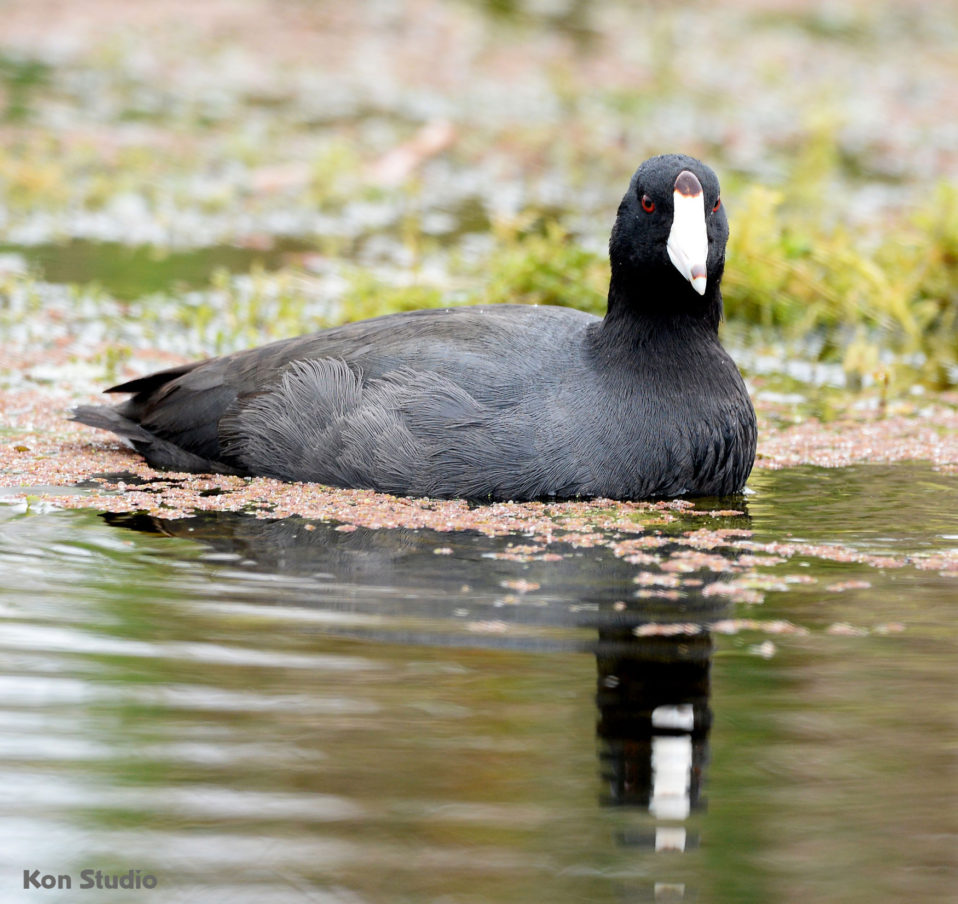
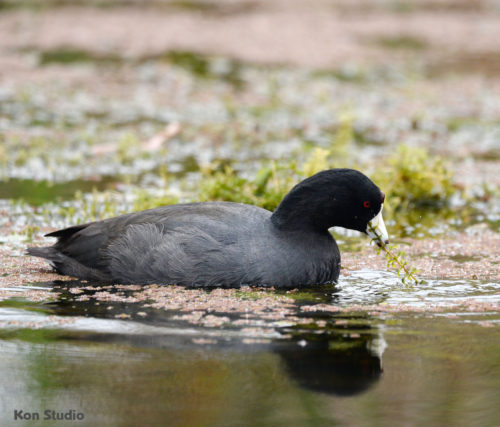
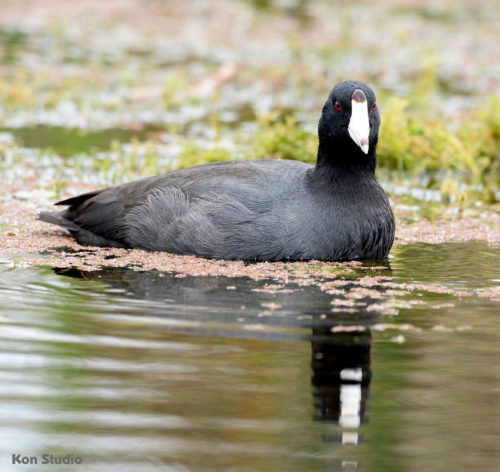
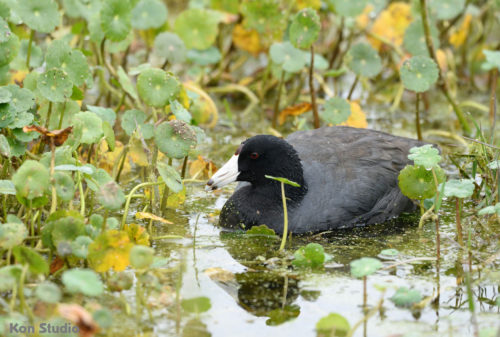
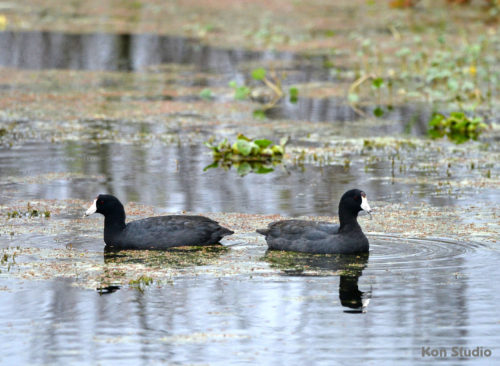
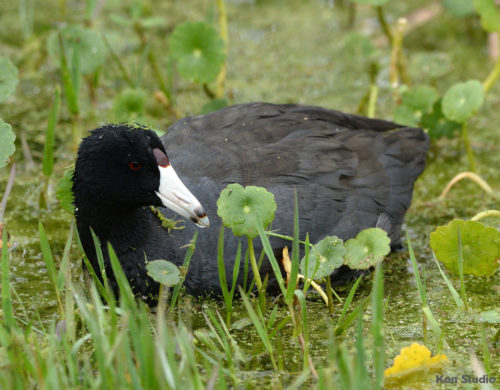
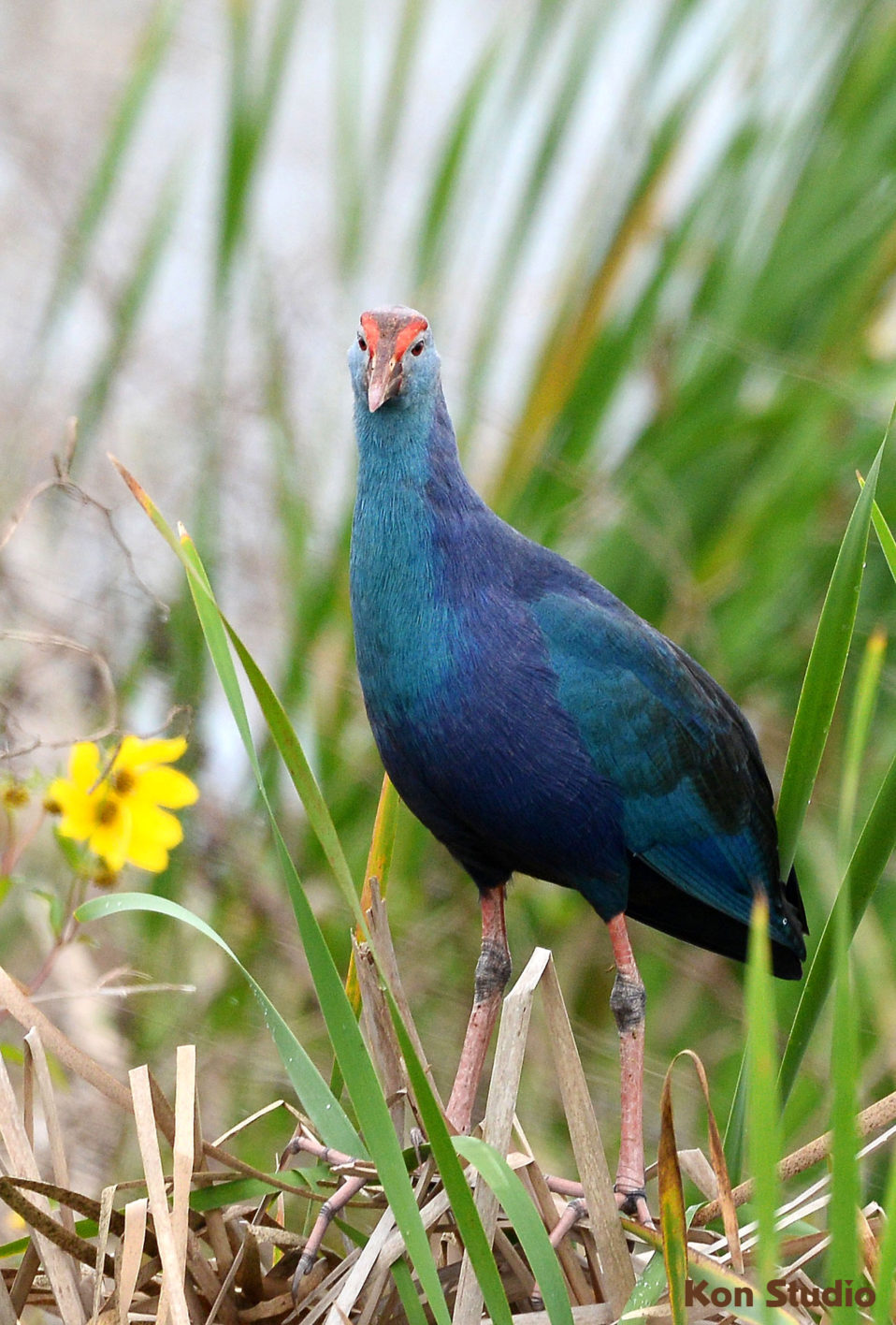
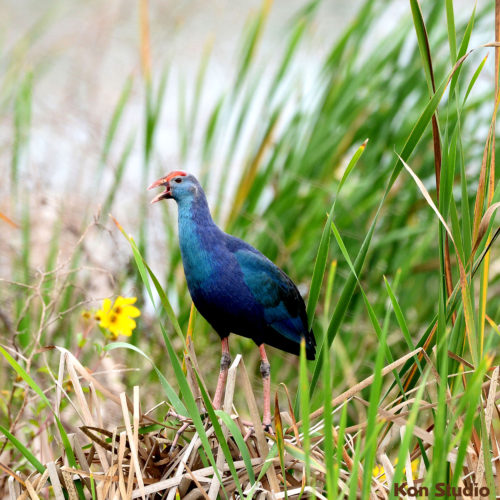
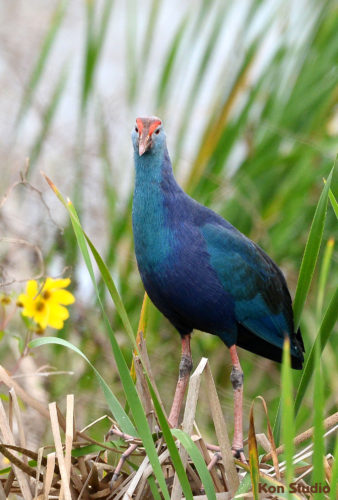
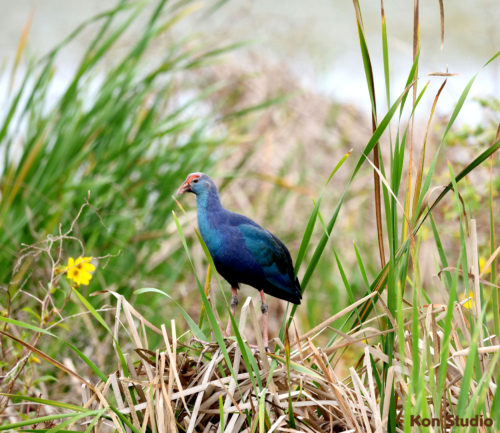
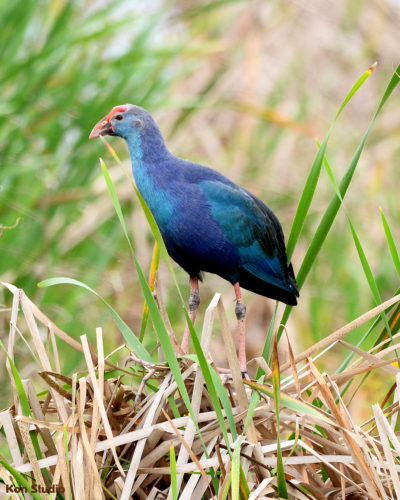
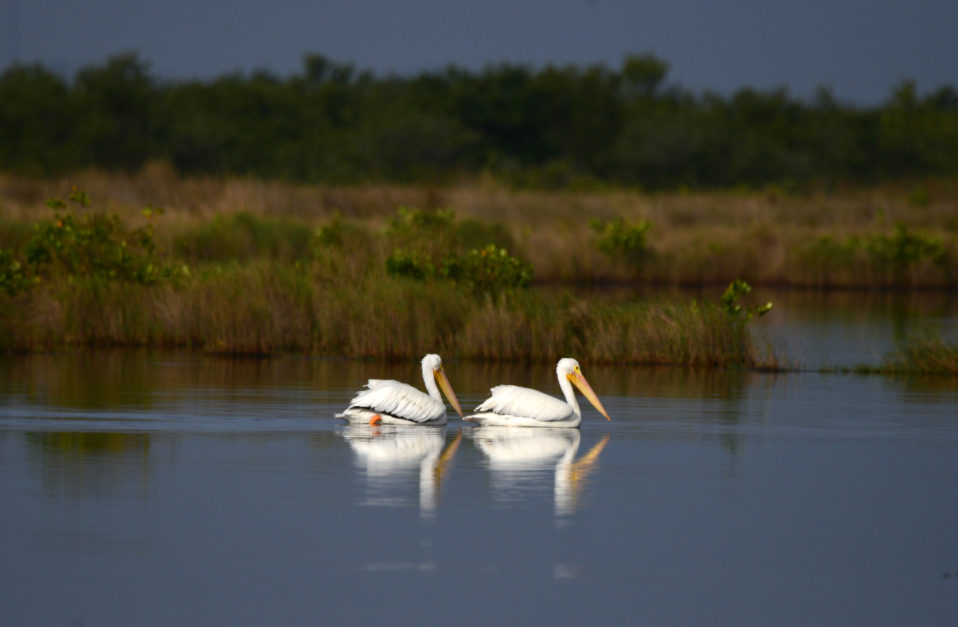
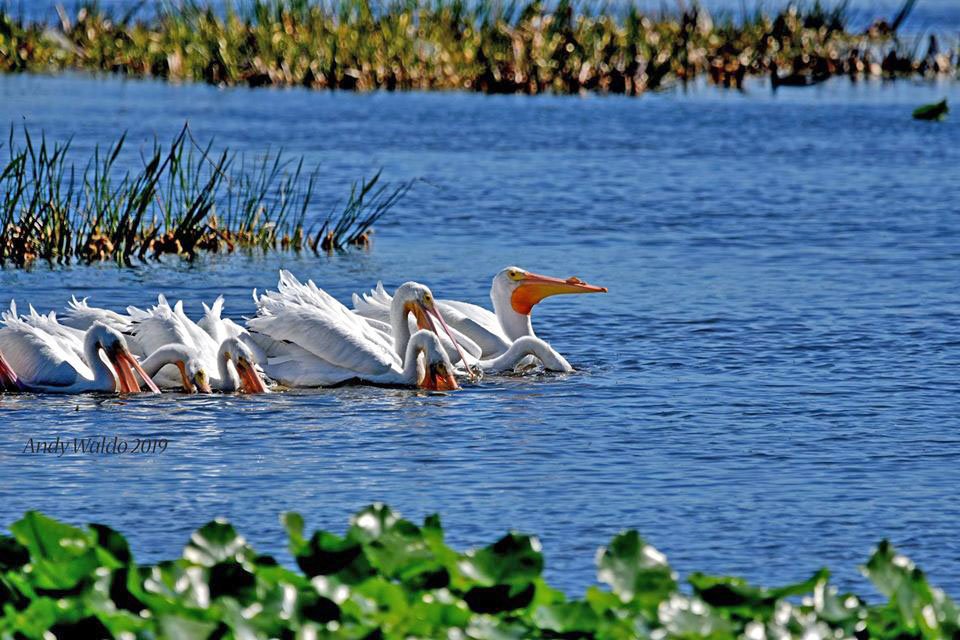
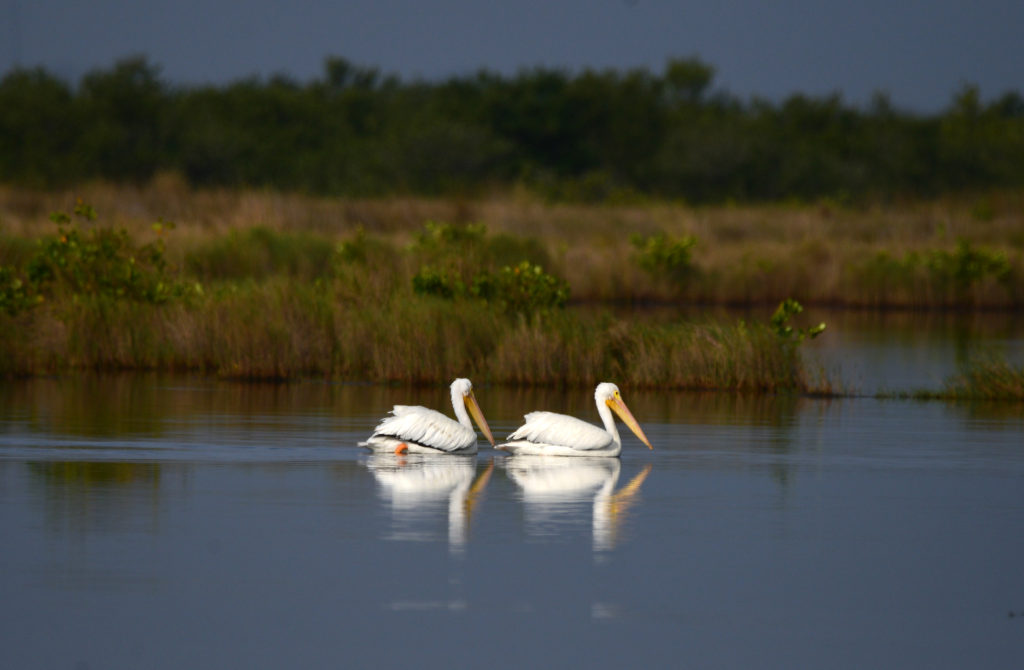
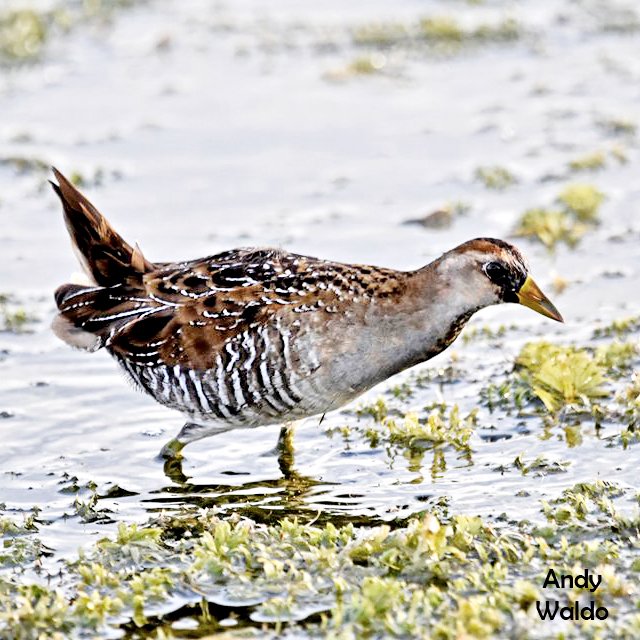
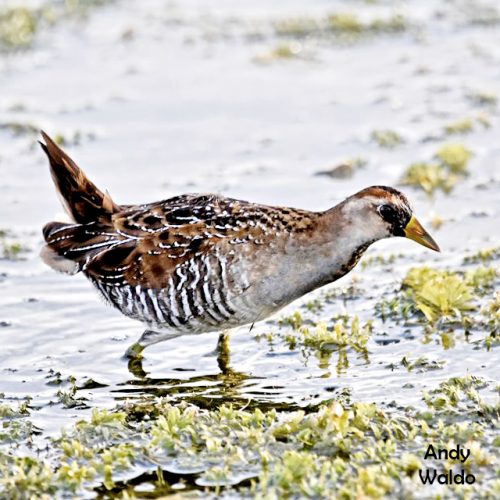
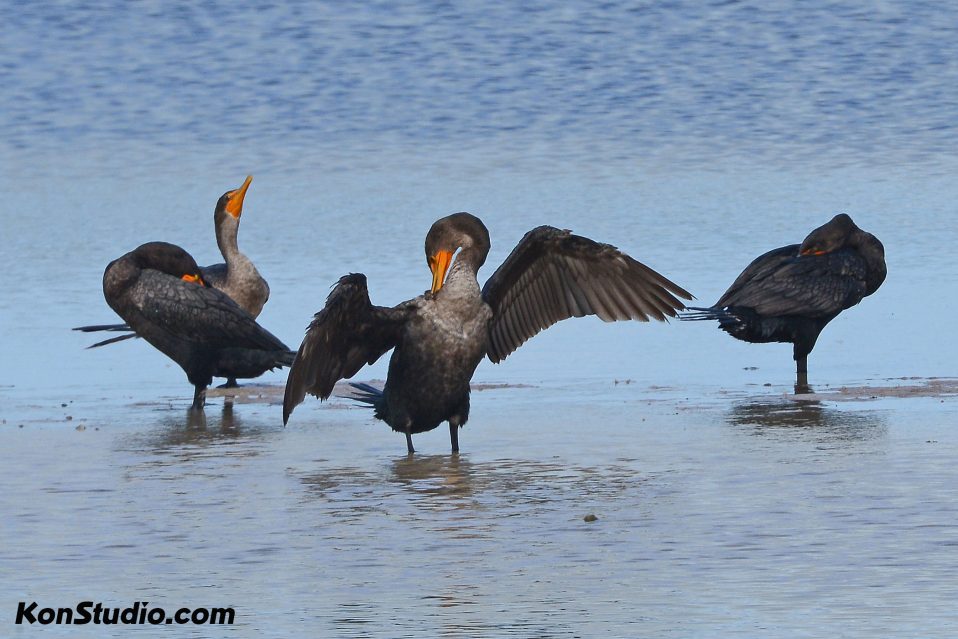
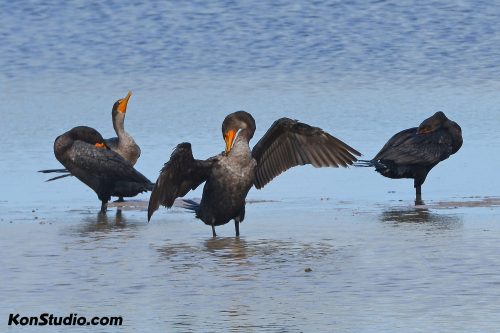
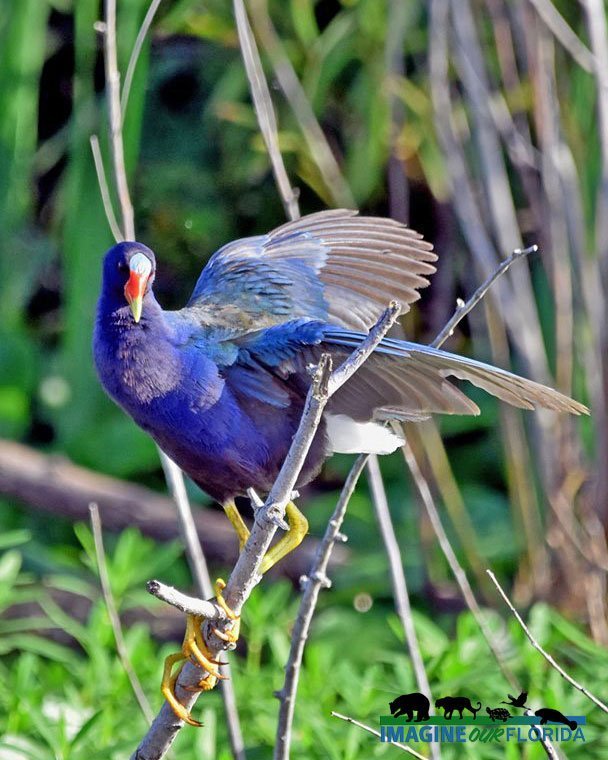
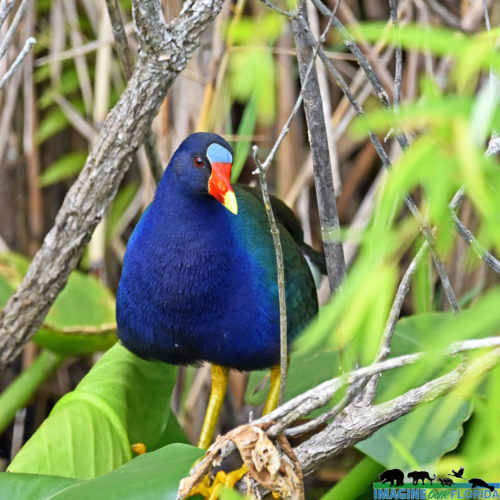
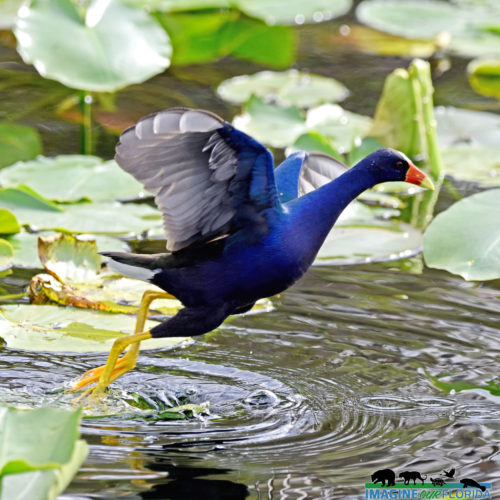
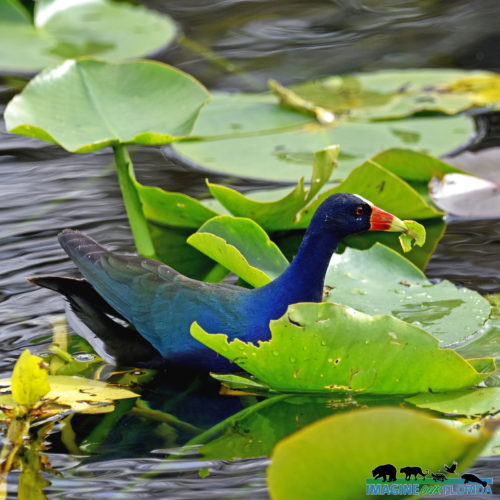

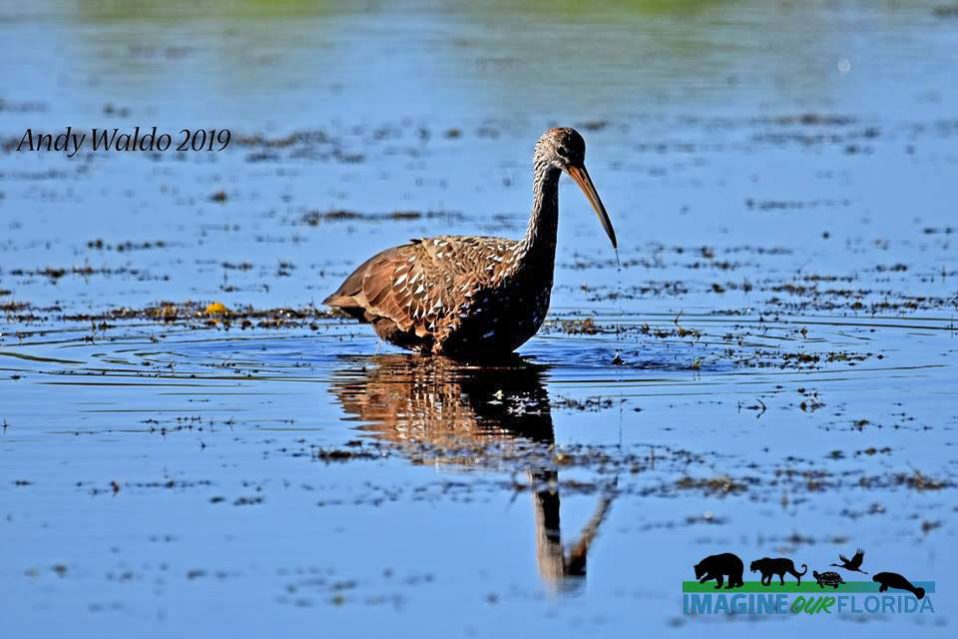

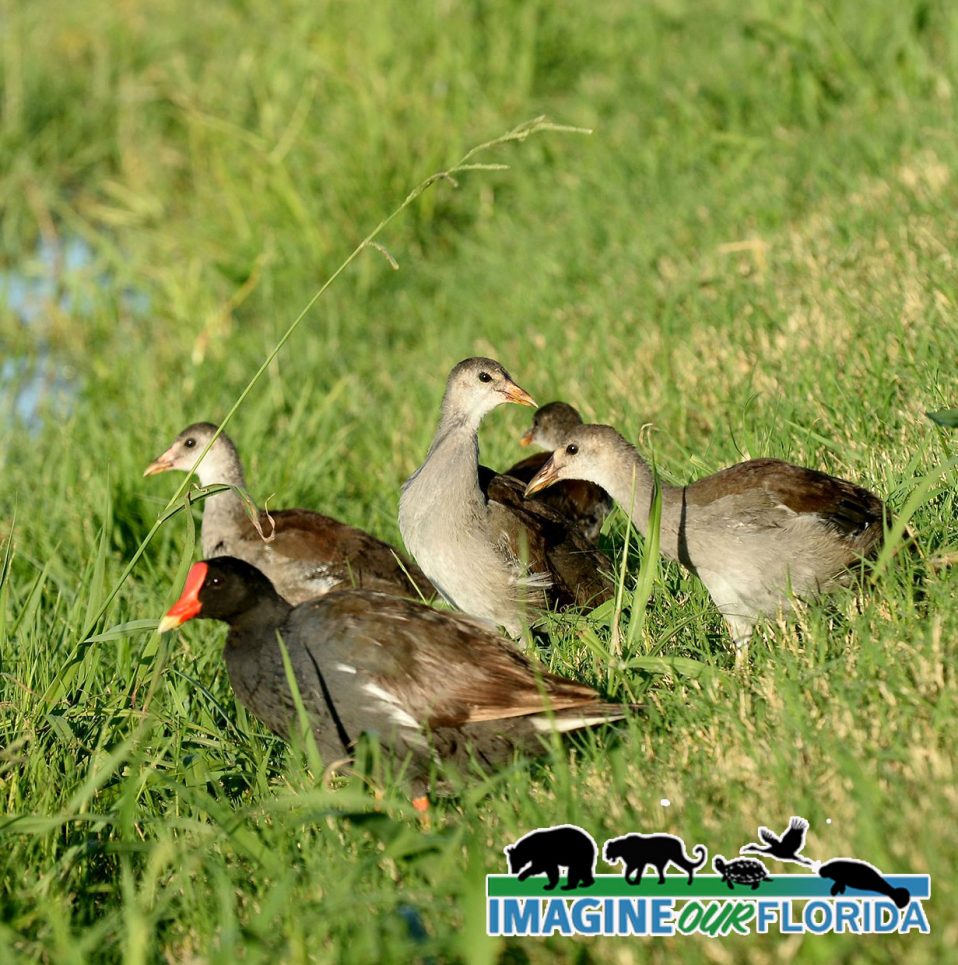
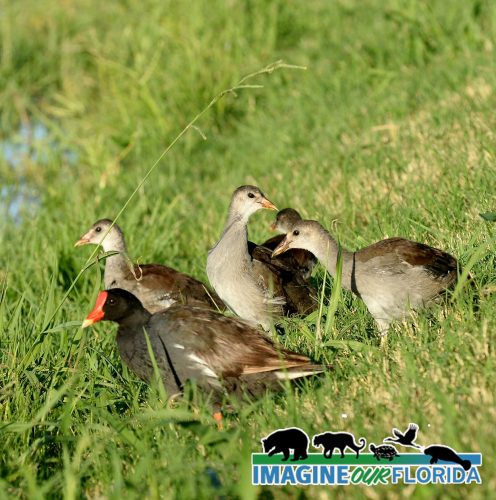
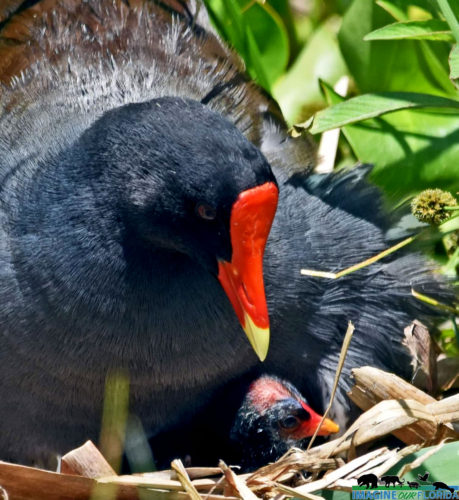
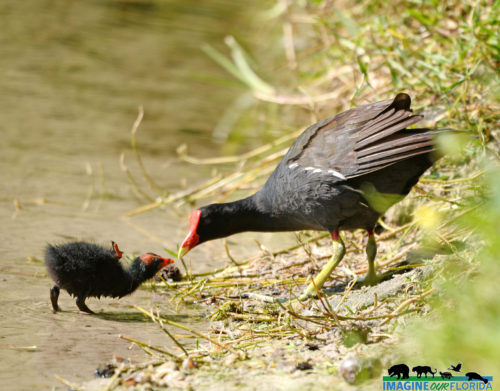
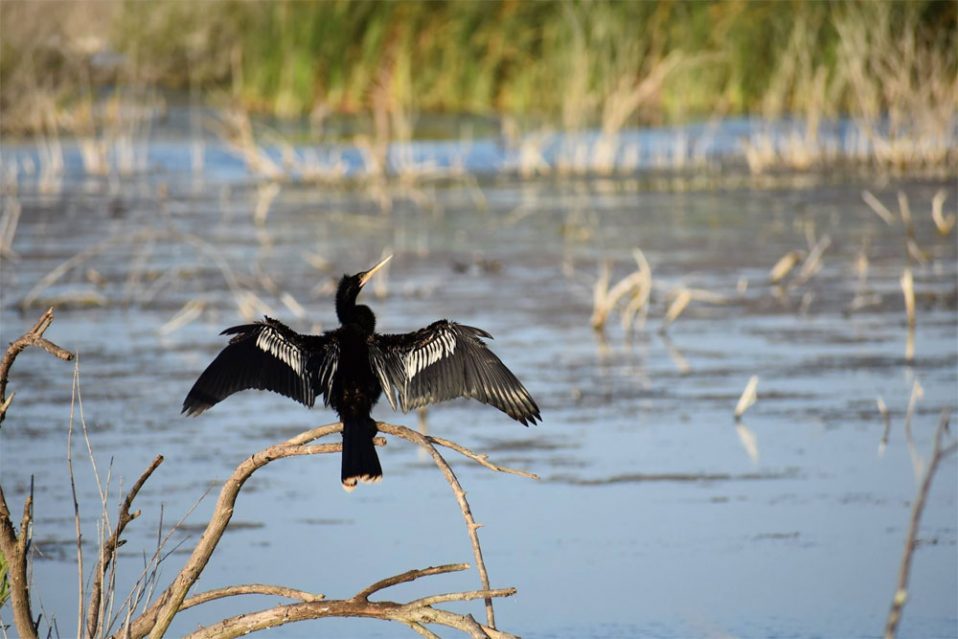
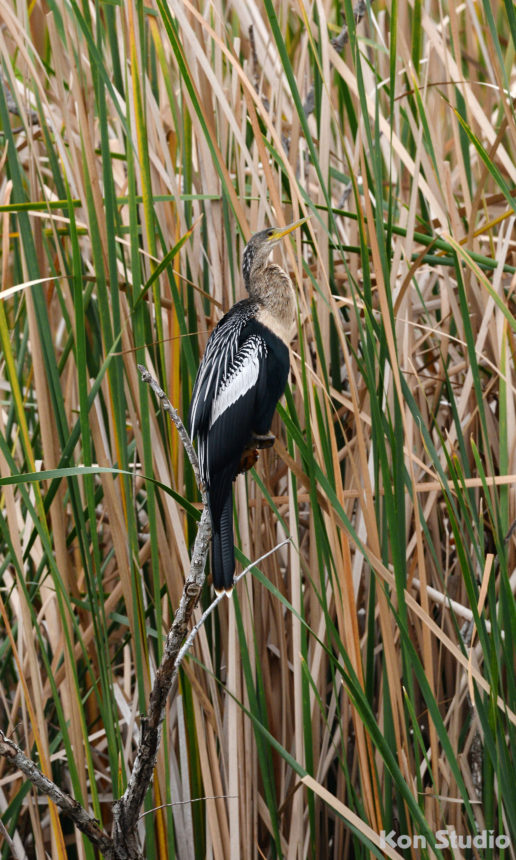
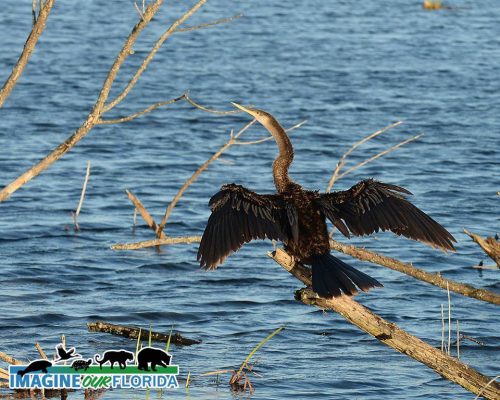
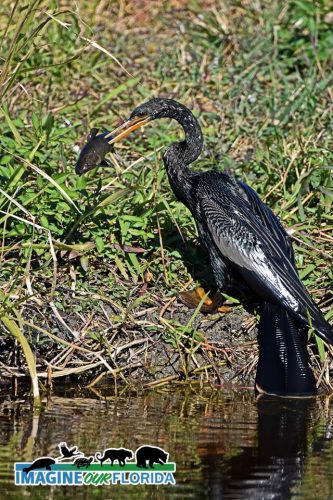
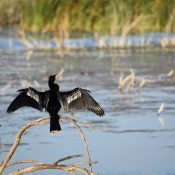
Recent Comments